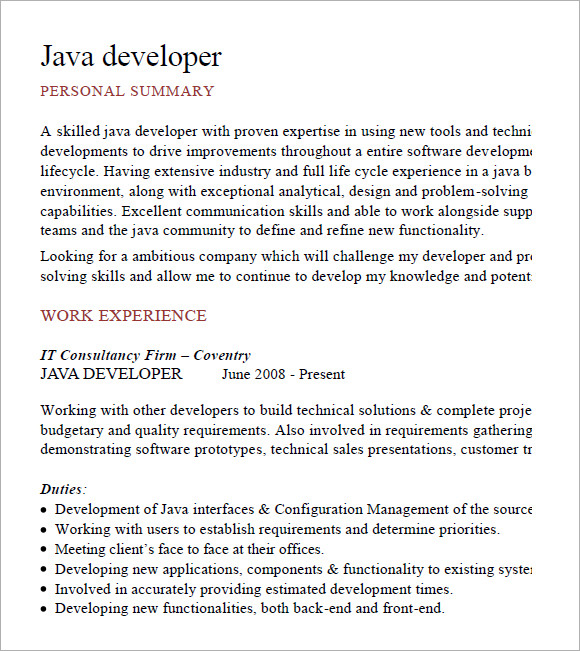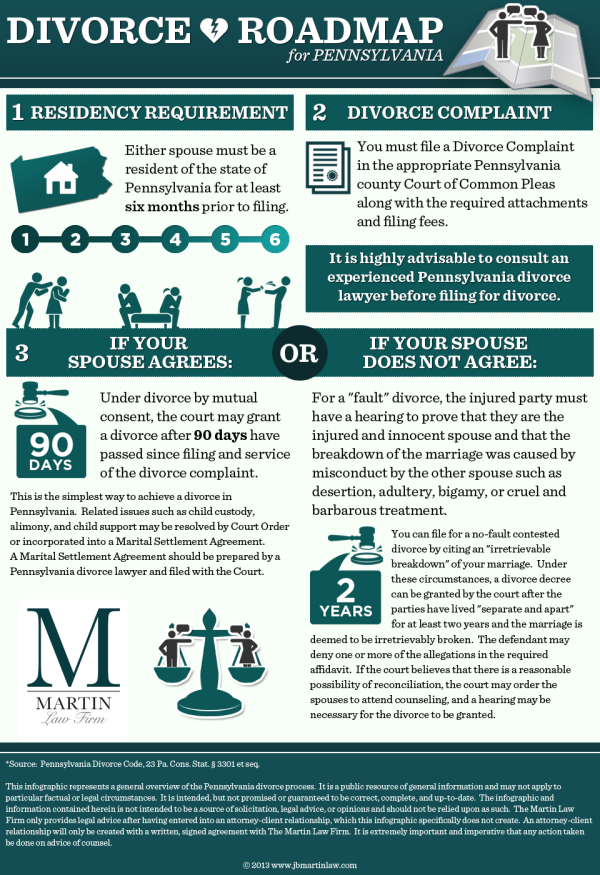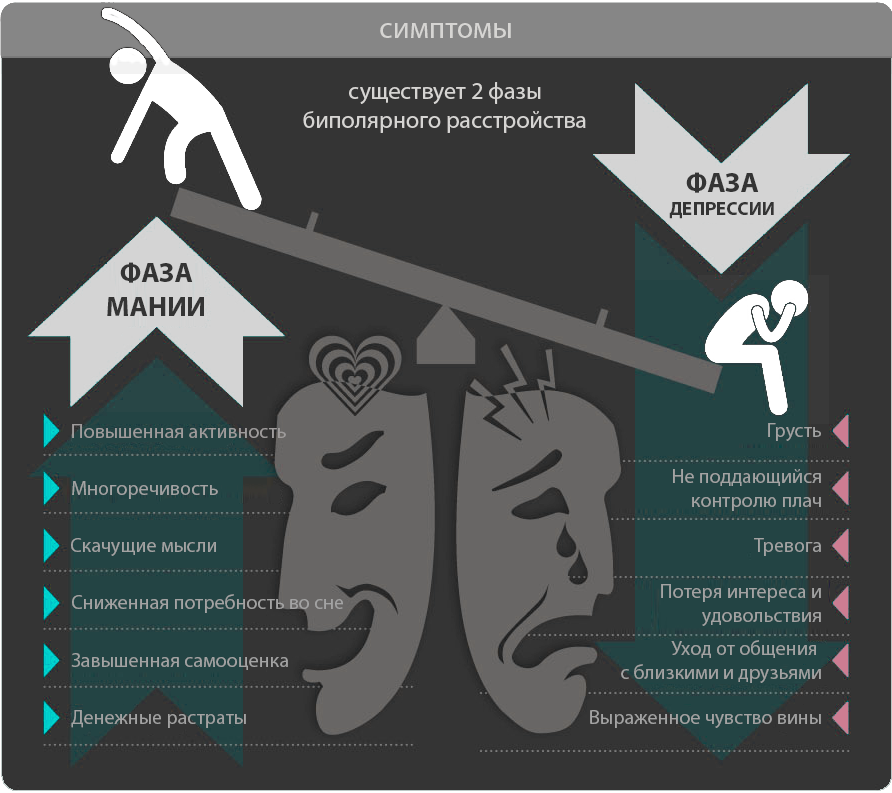How to determine your priorities
9 Tips for Identifying and Living Your Priorities
Several years ago career advisor Laura Yamin, MA, noticed that she was experiencing way too many burnouts. She realized that she needed to stop focusing on urgent requests, which masqueraded as important things. Instead, she refocused on exploring the type of life she’d like to live.
This helped her figure out what’s truly important to her. From there she was able to distinguish her priorities — the tasks, experiences and actions that fulfill her personal values.
Many of us feel like we’re being pulled by pressing things, while our real priorities get neglected.
“In my work, I find that many people are ‘reactors,’” said therapist Melody Wilding, LMSW. “That is, they live their life responding to the priorities other people set for them, rather than priorities they have defined as important to themselves.” Many spend most of their days answering email, calls, invitations and demands from other people, whether it’s their boss or their family, she said.
Not surprisingly, this leads to dissatisfaction and disillusionment, Wilding said. Because if you value family, but you’re working 70 hours every week, you’ll likely feel a lot of internal stress and conflict, she said.
However, “priorities give you the opportunity to exercise personal choice and live out your values on a daily basis.”
Below, Wilding and Yamin shared their suggestions for discovering and living your priorities.
1. Name your values.
Often instead of exploring our own values, we default to the values of our family or culture, Wilding said. Take the time to consider what’s important to you, what you stand for and what you believe in, she said.
Avoid focusing on external rewards, such as “money, status or others’ approval.” Avoid “basing [your] priorities on what [you] believe [you] ‘should’ do.”
2. Do the “maintain, improve, change” test.
Wilding suggested reflecting on the past 6 months.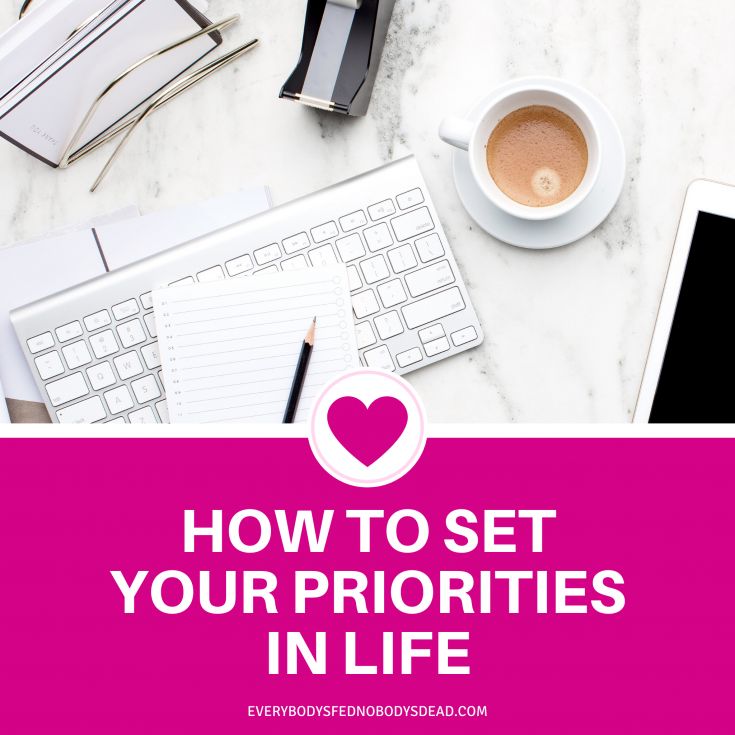 “Write down what you want to maintain, improve or change across the various domains of your well-being: relationships, health, finances, work, spirituality and personal life.”
“Write down what you want to maintain, improve or change across the various domains of your well-being: relationships, health, finances, work, spirituality and personal life.”
Then go through what you’ve written, and create specific actions. Wilding shared these examples: Because finding a new job is a priority, you decide to schedule a coffee date each week with colleagues and mentors to network. Because spending quality time with your partner is a priority, you decide to spend 30 minutes together after work — no distractions.
3. Test-drive different styles.
To live based on your priorities, test out different ways of working with goals or maintaining habits, Wilding said. Try something new for 30 to 90 days, such as learning a new language or training for a race, she said. Or start small — “what B.J. Fogg calls ‘tiny habits.’” For instance, your goal is to build a reading habit. You start by reading a single page or even a single paragraph each night, she said.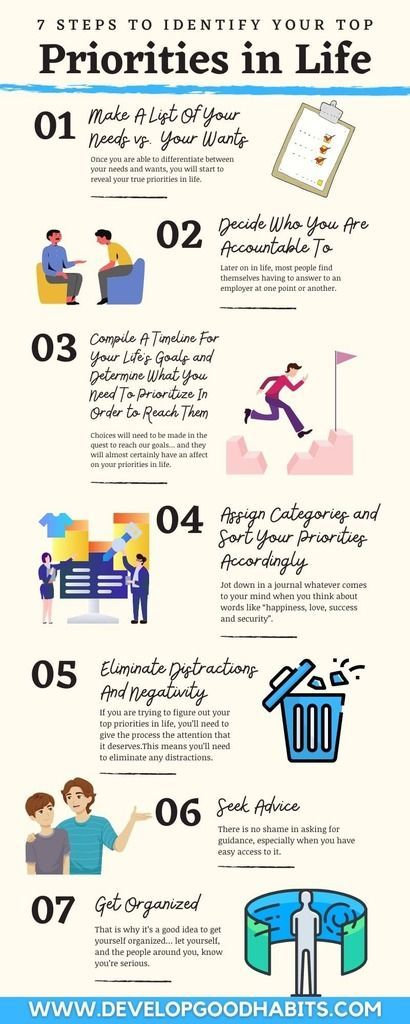
4. Use the “Rule of 3s.”
Our priorities tend to fall apart when we overestimate how much we can do in a day, Wilding said. That’s why she suggested limiting yourself to three things that match your priorities. “Anything you accomplish above that is gravy!”
5. Take stock of your job.
At work priorities are placed upon you, Yamin said. She suggested answering these questions so you can set priorities that meet both your personal values and the company’s vision and goal.
- Why are you there?
- What are your strengths and responsibilities?
- What are their expectations of you?
- What are your expectations of this position?
Yamin also finds it helpful to have your job description and a list of goals (which are usually set during the performance review) close by. This helps you discern if a task meets your goals or duties, she said. If it doesn’t, consider if you’re the right person for that task.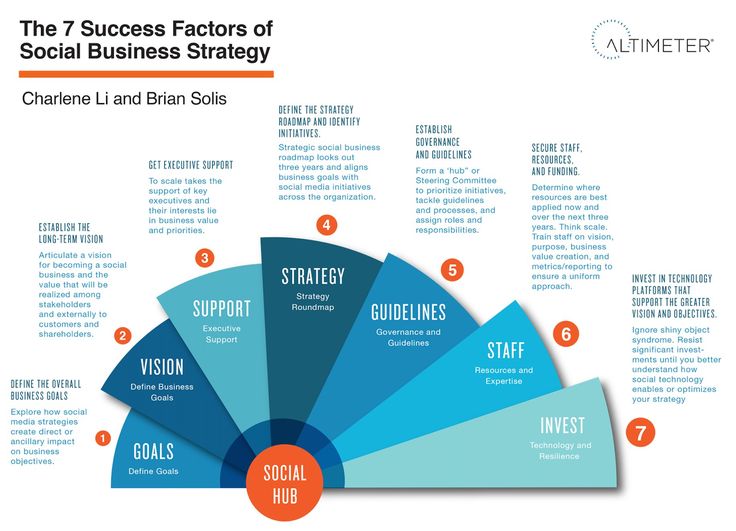
Sometimes, new priorities come up in the middle of the year, she said. When this happens, talk to your supervisor about which tasks must be done first and which can wait, she said.
6. Cut out the urgent for what’s important.
Wilding cited President Eisenhower’s famous quote: “I have two kinds of problems: the urgent and the important. The urgent are not important, and the important are never urgent.”
Urgent tasks are often related to someone else’s goals, she said. Important tasks “are in service of your values and longer term mission.” Urgent but unimportant tasks might be a last-minute invite to a networking event or checking social media, she said.
Wilding stressed the importance of ruthlessly cutting or eliminating urgent but unimportant tasks or delegating them. She shared these examples: You’re working on an important project, so you hire help for laundry or grocery shopping. You say no to networking events to focus on a meaningful side project.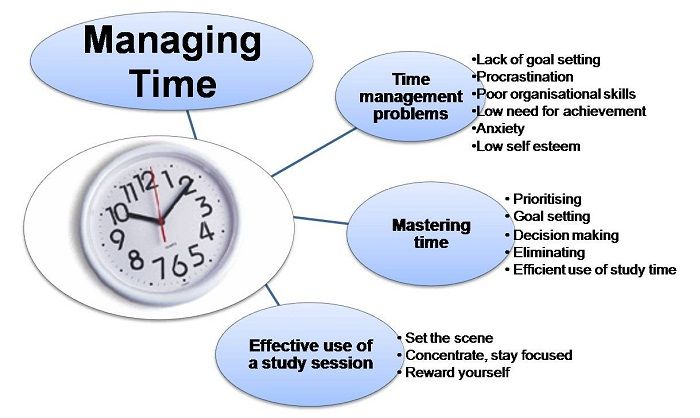 You check your inbox three times a day instead of every 10 minutes.
You check your inbox three times a day instead of every 10 minutes.
“The goal is to become more intentional and protective of your time, rather than reactive and deleting important mental energy and focus you need to work on the ‘important’ things.”
7. Contemplate before committing.
Before Yamin says yes to a project, she asks herself: “Do I want to do this? How does it meet the intentions I am working on? Do I have the time and energy it requires to do this project? What would I need to give up if I don’t have the time and energy it requires?”
“Taking time for self-inquiry allows me to make an informed decision. I am able to then take ownership of my part and do the best I can.”
8. Create a “to-don’t” list.
According to Wilding, this list contains “the things you vow to say no to in order to meet your priorities.”
9. Separate priorities by season.
Yamin’s priorities change based on her seasons, which may last several weeks to several months.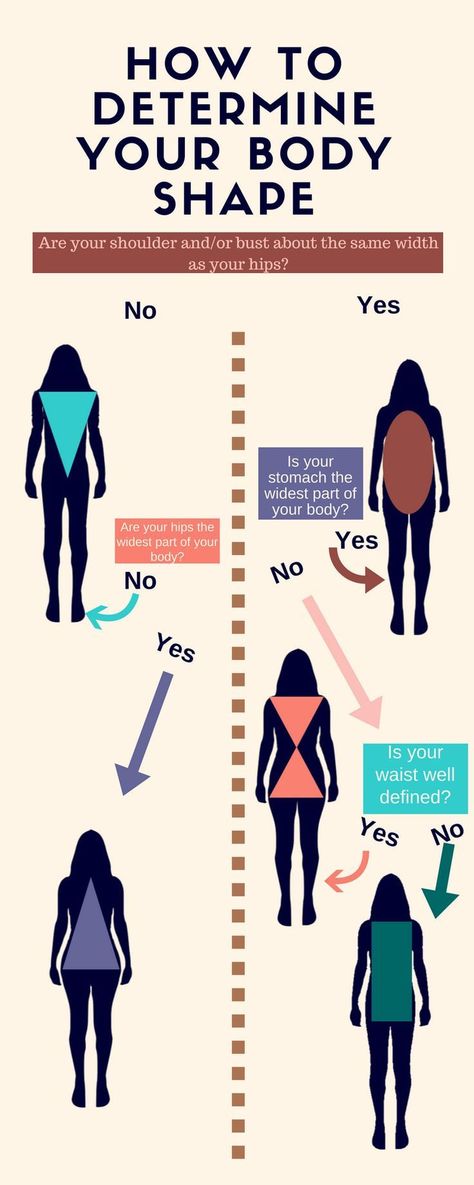 During each season she focuses on a different area in her life, such as career, relationships, play or mastery of new skills. For instance, in November and December, she shifts from working to being present in her relationships. “It eases the inner dialogue to do it all.”
During each season she focuses on a different area in her life, such as career, relationships, play or mastery of new skills. For instance, in November and December, she shifts from working to being present in her relationships. “It eases the inner dialogue to do it all.”
During other seasons she works hard with little to no rest or play. “If I shift the focus that this is temporary, I can then take the actions needed that support this priority. When it’s rest time I make sure I use it, too.”
It can be hard to stop living on autopilot and say no. But it also means having power over your life — a power available to all of us.
Checklist photo available from Shutterstock
How to Figure Out Your Priorities
Source: Brett Jordan/Unsplash
Do you know what is high-priority for you? Or do you feel like everything is high-priority and don’t know what to do first? Or, are you just too plain busy to ever get to the high-priority stuff? If you're reading this, then you're likely looking for more help figuring out your priorities.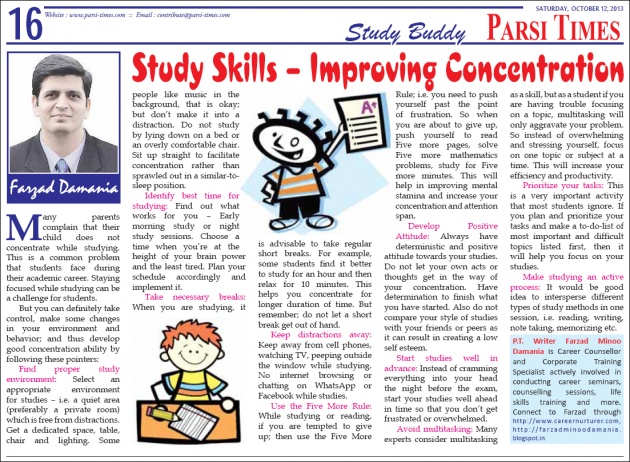 Don’t worry, we can help.
Don’t worry, we can help.
What, Exactly, Is High-Priority?
Well, the answer depends on who you ask and which aspect of life we're looking at. Are we talking about work priorities, relationship priorities, family priorities, or figuring out which is the highest priority of these high-priority items?
To start, let’s take a look at each of these life domains to better understand different types of priorities, how they fit together, and how they may compete with each other.
Work Priorities
To set priorities for work, make a list of the major tasks that you need to accomplish. Then list these tasks in order of importance. Be sure to also note whether one task needs to come before another or is dependent on another task being completed first. For example, maybe you need a website before you can start selling things in your online business.
Relationship Priorities
Maybe there are some people we want to see more than others. Or, maybe there are certain activities that we feel are more important to ensure the success of our romantic relationships and friendships.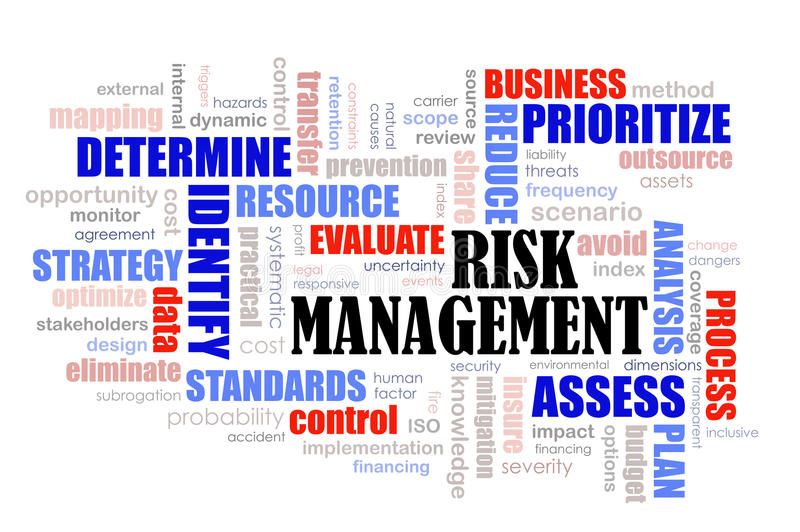 Some examples of relationship priorities could include: being honest, making time for fun, practicing random acts of kindness, or talking about fears and difficulties.
Some examples of relationship priorities could include: being honest, making time for fun, practicing random acts of kindness, or talking about fears and difficulties.
Family Priorities
What are the highest priority actions you need to take to insure your family is taken care of? This might depend a lot on whether you have kids, aging parents, or a small family. So take a moment to think about high-priority actions within your family. Remember, your priorities don't necessarily have to be engagement-related. For example, your priority may be to set boundaries or take time away from your family rather than spending a lot of time with family. Everyone is different.
Life Priorities
Do you have other priorities related to your mental or physical health, finances, purpose, or personal growth? Think about what these priorities are.
What Are Your Top Priorities?
Now that you’ve thought about your priorities in each of the life domains, you're probably now wondering, how do I prioritize my priorities?
Well, pause here to look over or think about your top priorities in each life domain.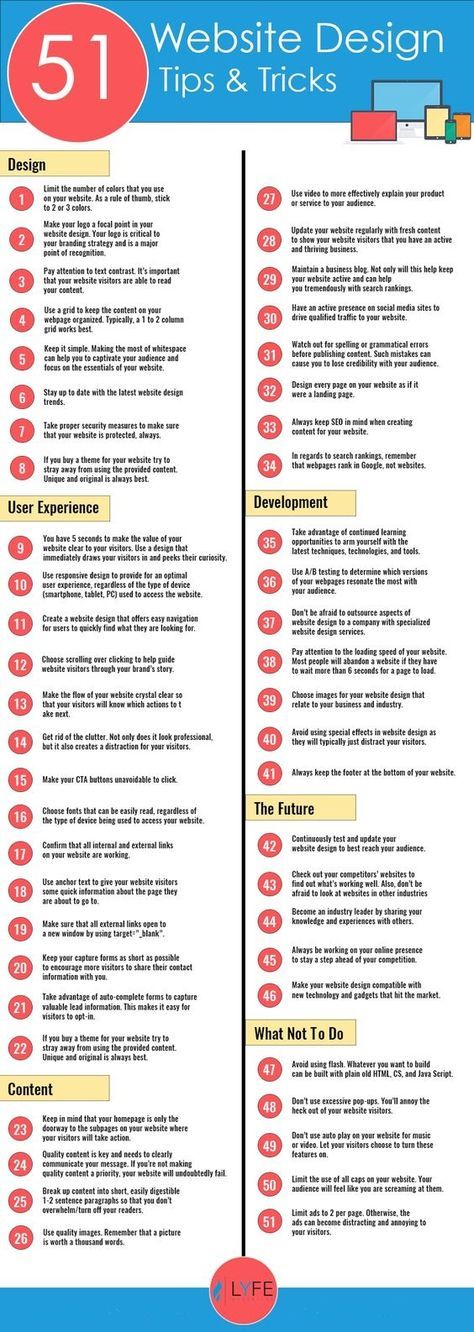 Combine these into one long list. Put the most important things at the top to hopefully get a sense of which things are most important to you. This can be a bit tricky, so try not to be too hard on yourself—just do the best you can. Your priorities might also change over time, and that's OK too.
Combine these into one long list. Put the most important things at the top to hopefully get a sense of which things are most important to you. This can be a bit tricky, so try not to be too hard on yourself—just do the best you can. Your priorities might also change over time, and that's OK too.
Managing Competing Priorities
There are only so many hours in the day. If we spend all day doing our top priority, then we'll have no time for our second priority. But if we spend an equal amount of time on each priority, we'll move forward so slowly on all of them that we may get frustrated and give up. So knowing our priorities isn't always the solution to sticking to our priorities.
Sometimes it can be easiest to focus on a few high-priority items at a time. For example, maybe you spend one month really focusing on your family but the next month, you need to prioritize more work. It’s OK to try to find a balance that works for you and your goals and experiment as you go.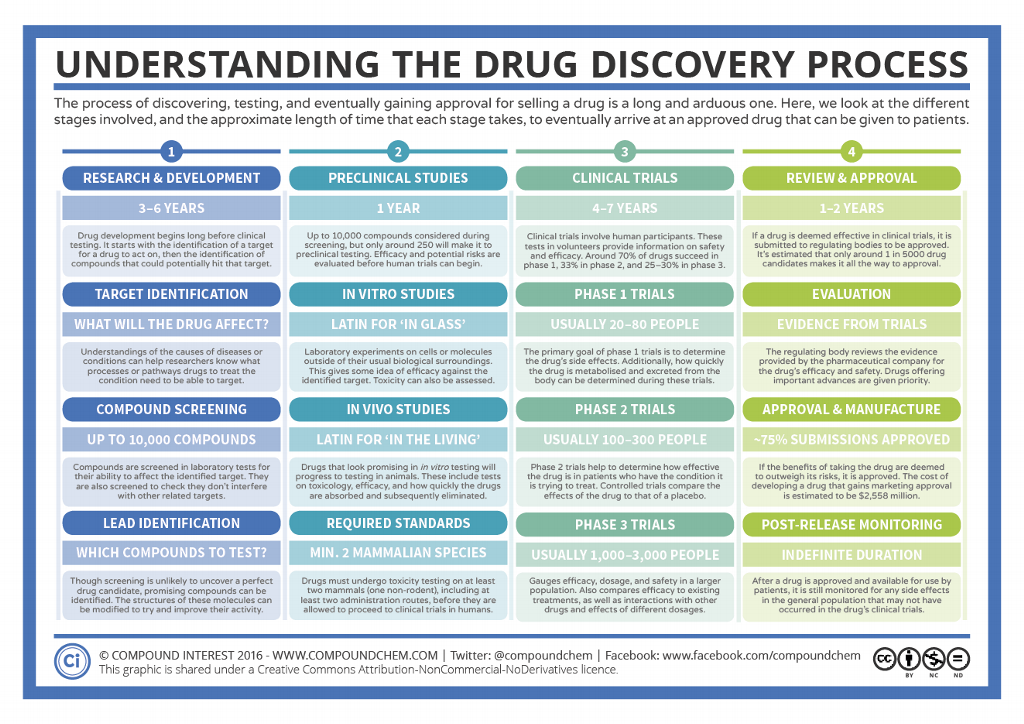
Taking Action on Your Priorities
Another thing to consider is what things make it easier or harder for us to stick to our priorities. For example, are there people who make it difficult to stick to your priorities? Are there situations that make it hard to stick to your priorities? Or, are there things about you that make it hard to stick to your priorities? What boosts your self-motivation? By taking the time to better understand your own unique challenges, you’ll also better understand what solution might best work for you.
Adapted from an article published by The Berkeley Well-Being Institute.
How to prioritize when you are constantly overwhelmed with tasks
December 13, 2021 Productivity
We find the main thing in life and learn to put it in the first place.
When you're drowning in a sea of tasks and obligations, even deciding what to do first can be difficult. In such a situation, it is important to accept that it is simply physically impossible to do everything, and to highlight the most important thing.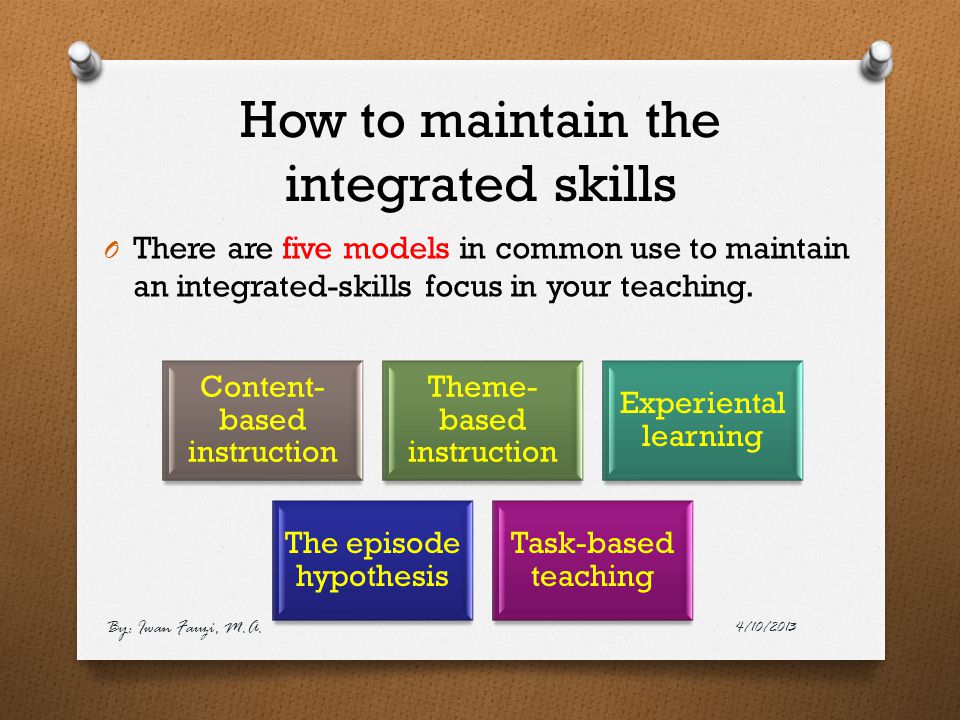 Otherwise, stress and guilt will not give you peace.
Otherwise, stress and guilt will not give you peace.
What should be the priority
Everyone will have their own specific tasks, but there are several areas of life that we all should pay more attention to. They are the ones that help you get closer to your long-term goals and make life worthwhile. Yet many ignore them for months or even years. Try to move them to the top of your to-do list.
1. Health
A healthy lifestyle fades into the background most often. We forgo a walk in the park and a workout to get things done, or we opt for fast food so we don't waste time cooking.
The results of such decisions accumulate and begin to affect all areas of life. Fast food does not provide enough energy to work well. The stress and irritability that comes from not taking care of ourselves causes us to lash out at our loved ones. As a result, not only physical well-being suffers, but also mental well-being, the emotional state deteriorates. So remind yourself: health is the foundation of everything.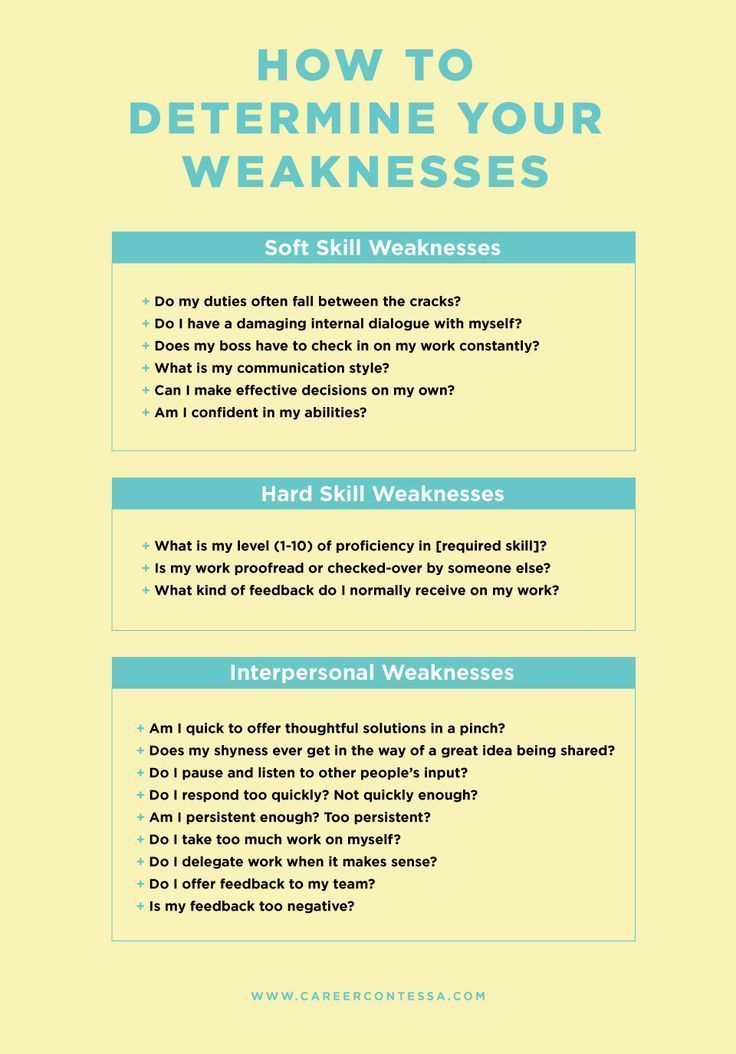
2. Sleep
Prepare for exams, finish writing a report, stay up late watching a TV series - we choose anything but sleep. It seems that by reducing it, we will gain a few extra hours for our business. But the price for this is very high.
You must have felt the effect of lack of sleep: fatigue, irritability, inability to concentrate and do something productively. But, according to research, a constant lack of rest leads to much more serious problems: from diseases of the cardiovascular system to deterioration of the brain. Don't neglect sleep.
Learn how to wake up easily 😴
- 16 habits that will make getting up in the morning easier
3. Relationships with loved ones
In moments of tension, we often start relationships with loved ones, believing that they will not go anywhere and we will simply return to communication when we have more time. And so we miss a child's concert because of a work meeting or forget to wish a friend a happy birthday because our thoughts are busy with business. Such trifles accumulate and spoil relationships, and it is difficult to restore them later.
Such trifles accumulate and spoil relationships, and it is difficult to restore them later.
Take time to strengthen family and friendship ties so you don't have to regret what you missed. Here are some tips to help you:
- Take the first step. Don't wait for others to offer something. Be the one to keep in touch and invite family and friends out.
- Decide for yourself what you won't miss out on. Someday you will inevitably have to make a choice in favor of work or other duties. But there should also be situations that cannot be neglected, such as a wedding anniversary or helping a friend in a difficult moment for him.
- Keep in touch. We are all busy, but this is no reason to lose contact. Call, write, congratulate loved ones on their victories, express sympathy for failures, thank you and get in touch just like that.
Try other options 👨👨👧👦
- 10 tips for strengthening relationships
4.
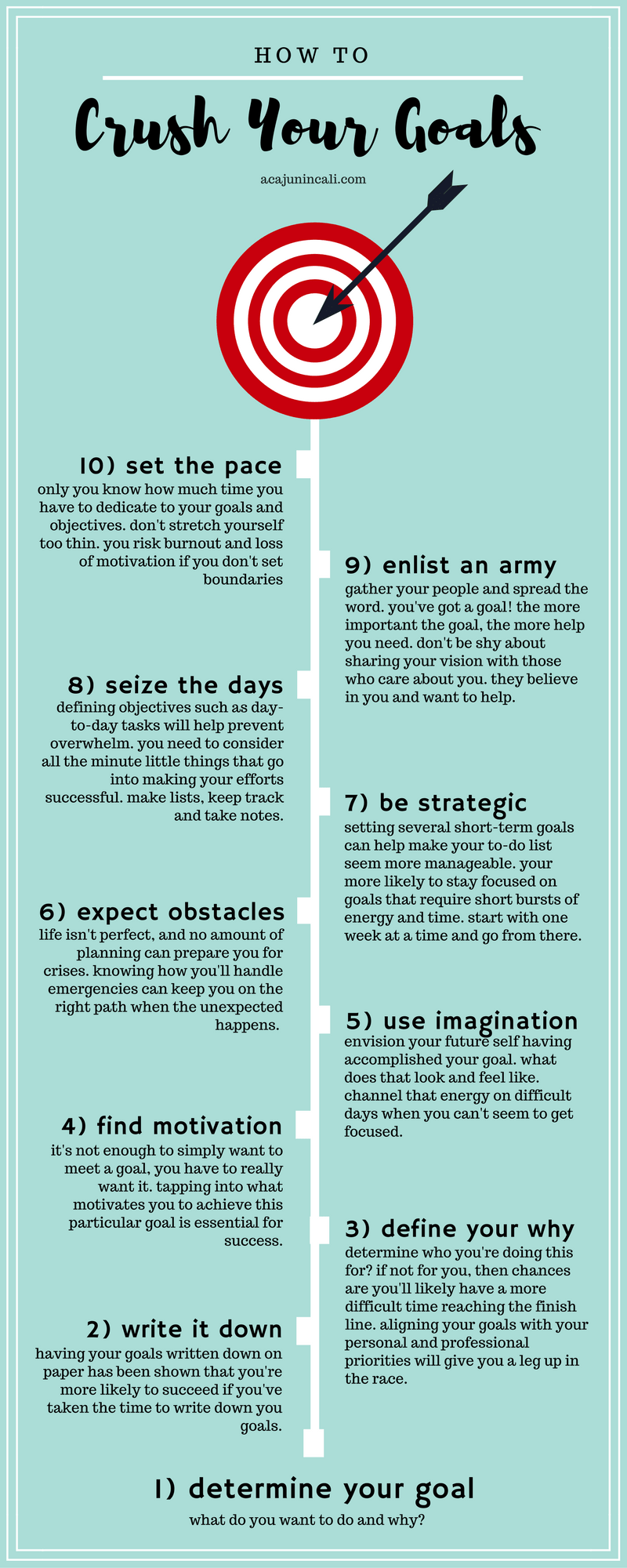 Productive work
Productive work Hard work and productive work are not necessarily the same thing. You can work from morning to night, but get minimal results. Therefore, it is important to act not just diligently, but wisely: work in depth, concentrate on tasks that help you grow, including professionally. Look for and prioritize opportunities that allow you to learn new things and do things that inspire you.
What to deprioritize
To move something up on your to-do list, you have to give up something else. Here are a few options for classes, the exception of which will free up your time and energy.
1. Social media and content uptake
Checking if someone's new on Instagram* or Twitter shouldn't be your priority. Cal Newport, author of Digital Minimalism, advises: “Focus on a small number of carefully selected online activities that support your values, and quietly skip the rest.”
To make this process easier:
- Keep track of where your time is spent.
 There are special services for this. When you see how much you are wasting, it will be easier to redirect that time to something else.
There are special services for this. When you see how much you are wasting, it will be easier to redirect that time to something else. - Make it harder for yourself. Delete social media apps to avoid boredom.
Take note 📺
- “Attention diet”: how to consume content correctly so as not to spoil your life
2. Low-value tasks :
- check mail and answer letters;
- read accumulated messages in work chats;
- do repetitive administrative tasks;
- fulfill someone's urgent request.
Such routine only distracts from the main thing. Remind yourself that you won’t achieve big goals if you constantly focus on small things like this.
3. Negative attitude
We often dwell on unpleasant events and failures, doubt ourselves or get angry at others. This not only spoils the mood, but also takes time that could be spent on changes in life. Use the following strategies to avoid getting stuck in negative thoughts:
- Collect compliments.
 When you were told something good, praised, thanked, complimented, write it down in a notebook or save a screenshot. When you are in a bad mood, rereading kind words will help you feel better.
When you were told something good, praised, thanked, complimented, write it down in a notebook or save a screenshot. When you are in a bad mood, rereading kind words will help you feel better. - Watch your inner dialogue. When you notice negative thoughts about yourself, imagine saying the same to a close friend or child. Most likely, you will find that you are too critical of yourself.
- Be kind. Remember that people could hurt you because they themselves experienced difficulties. But don't forget to be kind to yourself. If you feel that the person is toxic, defend your boundaries or stop communicating.
How to put the important things first
1. Combine all tasks
You probably have a list of work tasks and personal tasks, and various ideas are constantly spinning in your head. So it is very difficult to understand what to take first. Therefore, the first step is to collect all the cases in one place and note by what date they must be completed. To do this, you can use paper or services like Trello and Todoist.
To do this, you can use paper or services like Trello and Todoist.
2. Get rid of distractions
Block access to sites that take up a lot of time. You can do this for the whole day or for a certain period when you need to work without distraction. If this is not an option for you, at least turn off unnecessary notifications.
Read the instructions 🛑
- How to block a website on a computer with Windows or macOS
3. Resist the urge to switch to something new
There will always be a new idea or task to tackle. But by switching from one to another, you will not advance in what you are doing. Even if you get bored, give what you started a chance. Don't quit one habit after a week to try another. Don't take on a new project until you've finished your current one.
4. Distinguish between important and urgent matters
We usually prioritize tasks with pressing deadlines, even if they are less important to us in and of themselves. But activities such as calling your grandmother or going for a walk are not prioritized, although they just make life balanced and give valuable memories.
But activities such as calling your grandmother or going for a walk are not prioritized, although they just make life balanced and give valuable memories.
Use the Eisenhower Matrix to prioritize tasks. It has four categories:
- Urgent and important: tasks that are valuable to you - they need to be completed as soon as possible.
- Non-urgent but important: tasks that help you develop - you need to put them on your calendar.
- Urgent but not important: tasks that can be delegated to someone else.
- Non-urgent and unimportant: tasks to be abandoned.
Try to do as much of the important things as possible and minimize the unimportant.
5. Manage your energy, not time
To do this, you need to determine when you are most productive and distribute tasks based on your energy level. For example:
- If you are an early bird, schedule important tasks for the morning when you are at your most energized.

- If you are a night owl, do projects that require concentration in the evenings.
- If you have small children, your productive time is when they are sleeping or someone else is looking after them. Use these gaps for your priority cases.
You might be interested ☀️
- How to manage your energy to be happier
6. Make a list of your commitments
We often take on too much, even though our energy and time are limited. Therefore, it is useful to periodically review your obligations:
- Make a detailed list of what you spend your time on.
- Divide these activities into categories: career, family, hobbies, and so on.
- Decide how much time you would like to spend on each category.
- Reduce lesser responsibilities so you have enough resources for the most important ones.
- Make a to-do list every day, taking into account the main categories for you.
7. Try to "eat the frog" as soon as possible
A frog refers to the most difficult or unpleasant task of the day.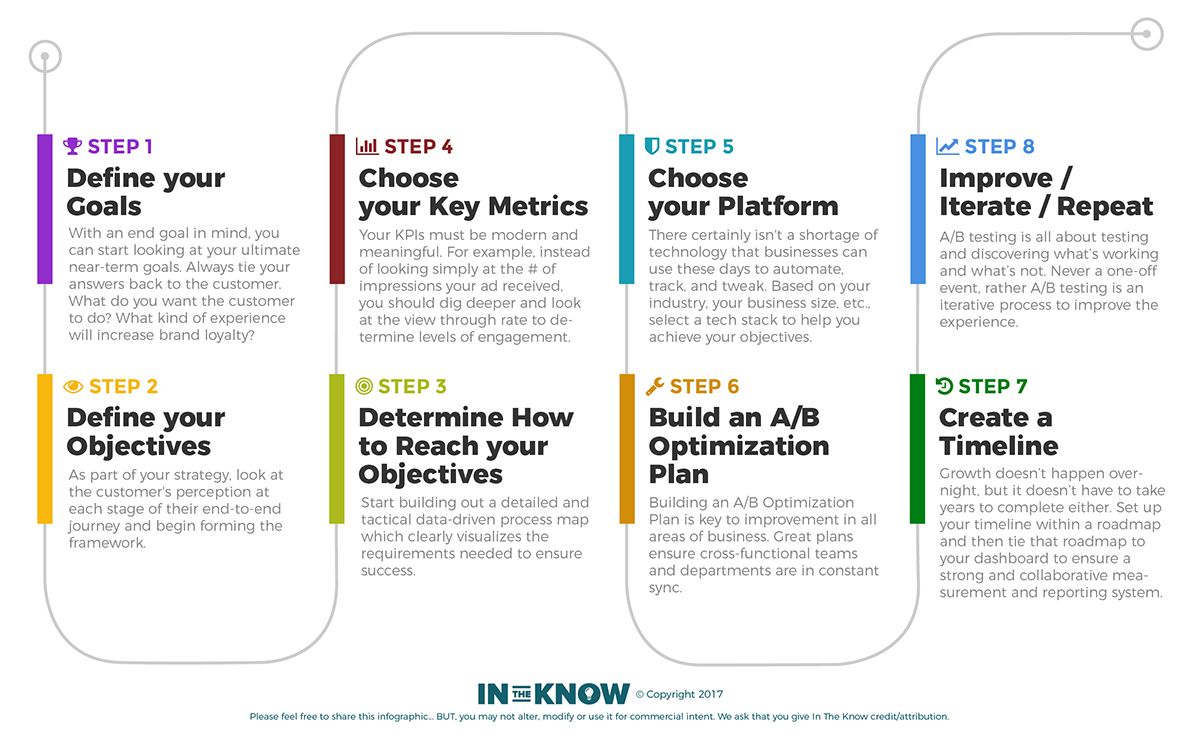 For example, work on a project that you dream of doing, go in for sports, write a thousand words for an upcoming book. Usually you want to postpone such things for later, but it is better to do them first.
For example, work on a project that you dream of doing, go in for sports, write a thousand words for an upcoming book. Usually you want to postpone such things for later, but it is better to do them first.
This way you will move forward, and everything else during the day will be easier. If you "eat a frog" every day, gradually you will achieve great results.
8. Divide tasks into blocks
This will help you build a schedule based on priorities and not waste time switching from one to another. Here's how the method works:
- Make a to-do list for the day.
- Divide tasks of the same type into blocks, for example, "Working with mail", "Writing a text", "Meetings".
- Calculate how long each block will take.
- Add blocks to the calendar one by one.
- Move on to the next one only when you have finished the previous one.
- Move the blocks in the calendar if necessary.
Try to have at least one of the blocks dedicated to your priorities every day.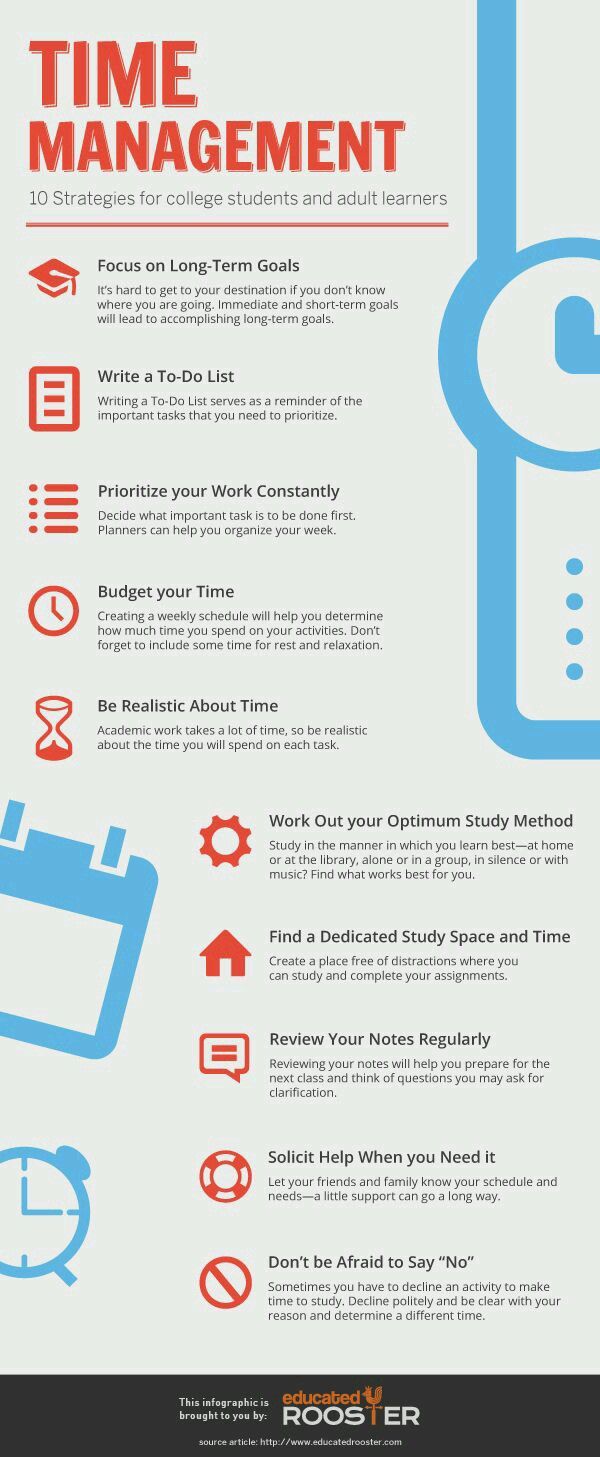
Read also 🧐
- 7 Effective Planning Techniques to Keep Things Done
- How to be More Productive: 7 Key Rules
- 4 ways to organize your to-do list so you can work more efficiently
*Meta Platforms Inc. and its social networks Facebook and Instagram are prohibited in the territory of the Russian Federation.
How to prioritize your career and personal life in 7 steps
July 13, 2022 Productivity
Understand your values, get rid of what you don't need, and strategize.
You can listen to a short version of the article. If it's more convenient for you, turn on the podcast.
Recall that you recently answered a friend's question "How are you?". Perhaps you said that you were “very busy” or that you were “too busy and don’t have time for yourself at all.” These are typical answers. Unfortunately, only a few know how to properly manage time.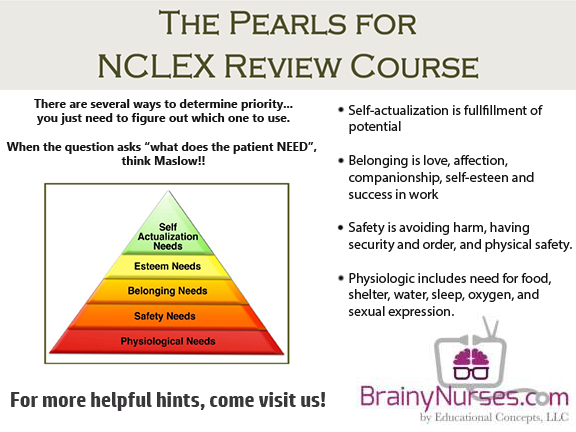 We waste precious minutes on nonsense and realize our mistakes when it's too late. As a result, we either greatly simplify the goals, or simply do not achieve them.
We waste precious minutes on nonsense and realize our mistakes when it's too late. As a result, we either greatly simplify the goals, or simply do not achieve them.
Imagine that you have to get up early in the morning to make it to an important work meeting, and the night before you accidentally discover an interesting new series. You watch it half the night, wake up much later than you should, and rush to work as fast as you can without having time to prepare. It's all because of the wrong designation of priorities. Instead of playing episode after episode, you could go to bed early, wake up in a good mood, and get ready for the meeting.
Why it's important to prioritize
The philosophy of good use of time is simple - don't worry about not having enough time left, but focus on how to make the most of it. And the only way to do this is to learn how to correctly prioritize.
Of course, you have heard about this before. But how often did you actually sit down at your desk and prioritize daily tasks? This needs to be done regularly for several reasons.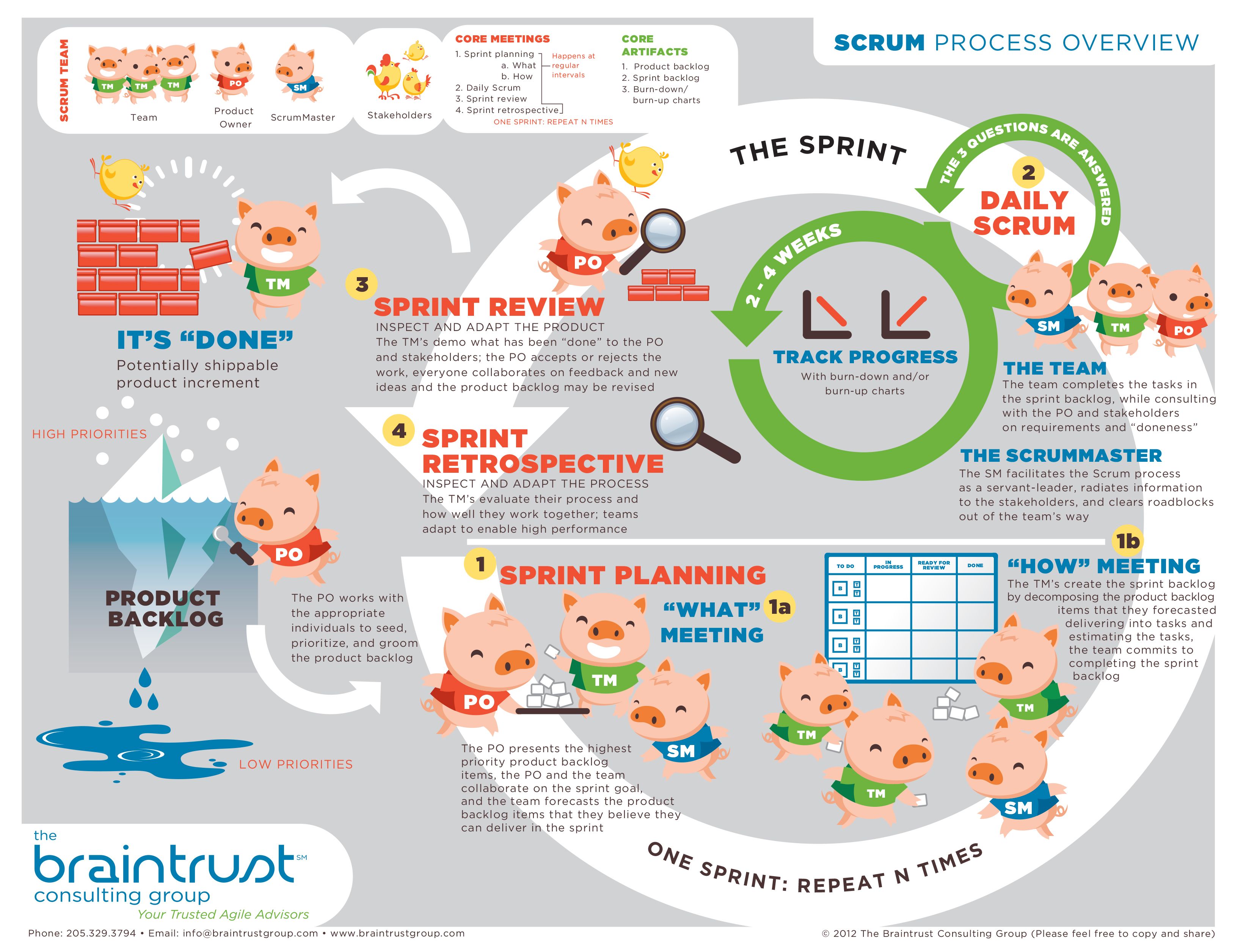
If you have to do a lot of things every day, you can't do without a system that will help you cope with everything. Priority makes it possible to distribute tasks in order depending on their importance. And this method leads to positive changes:
- Increases productivity. When we identify the most important tasks and set aside time to complete them, our performance improves significantly, which means we get more done than usual.
- Reduces anxiety and stress levels. When we have a huge list of tasks in front of us, and there is not much time left, we begin to worry. Prioritizing helps you narrow down your to-do list and use your time wisely.
- Expands the possibilities. When we focus on the most important tasks, we achieve goals faster and notice new areas for growth.
What helps prioritize
1. Understand the value of tasks
Before sorting tasks, you need to determine the degree of importance of each of them. To do this, ask yourself what exactly you will get as a result. There are three types of value:
To do this, ask yourself what exactly you will get as a result. There are three types of value:
- Instant . For example, when you call a colleague to find out important information for a project you are currently working on.
- Short term. It is illustrated by putting things in order on the desktop - the documents will be perfectly sorted until a mess is formed again.
- Long term. Let's say you want to lose weight and sign up for a gym; to see the result, you have to sweat for several months.
When you invest in your time, filling your days and hours with activities, you make them valuable for your future. Therefore, understand what is important to you, and then act.
2. Get rid of unnecessary tasks
We rarely plan daily activities ourselves, so our brain automatically does this for us and prioritizes tasks, only unconsciously. Some of them bring us closer to the goals, others do not give any visible results.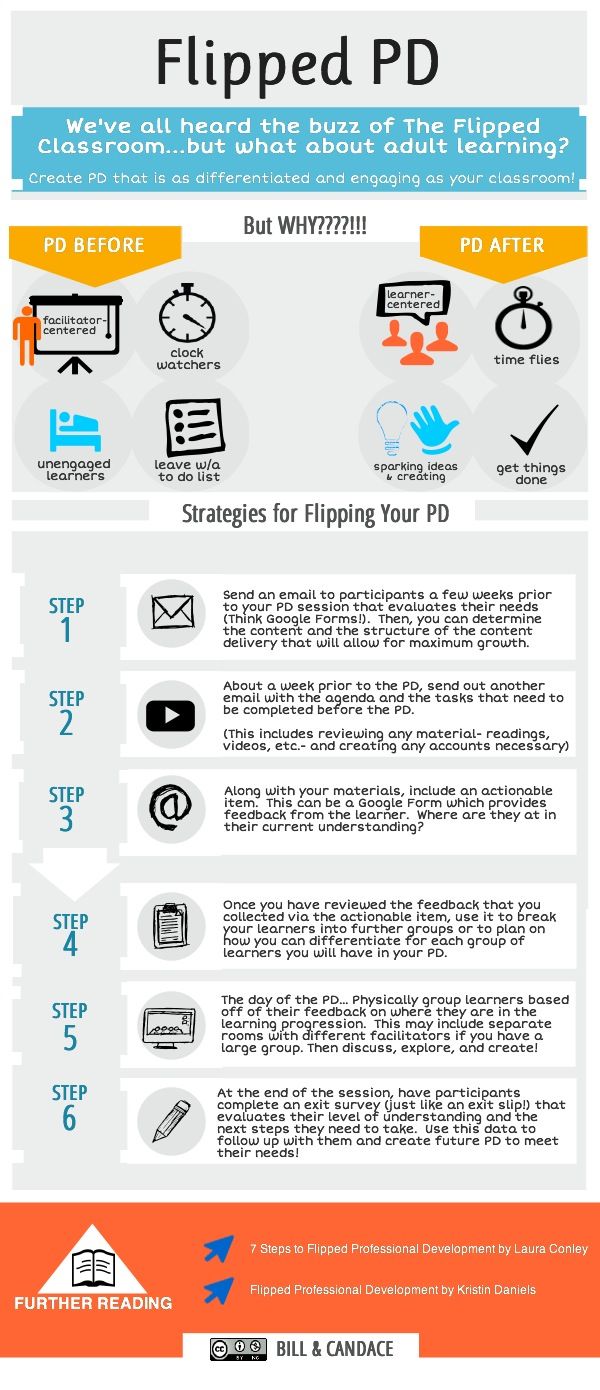 That is why it seems to us that we are constantly busy - not all of our actions are related to what we want in the future. We end up wasting our time on unnecessary things. For many, this becomes a broken record and is repeated over and over again, every day, month and year.
That is why it seems to us that we are constantly busy - not all of our actions are related to what we want in the future. We end up wasting our time on unnecessary things. For many, this becomes a broken record and is repeated over and over again, every day, month and year.
Imagine a simple scenario. You are going to visit the USA for a week. This is your first visit to the country, so you want to do a lot - see the main attractions and eat at the best restaurants. Learning about the country itself and travel-related issues can be a bit confusing. Where to begin? Buy a plane ticket? To book a hotel? But what if you like a hotel that is too far from the sights? Then maybe it's better to first make a list of places you want to visit?
So many questions can make your head spin. That's what prioritization is for. Write down all your questions, get rid of those that contain minor feelings, and act.
3. Divide tasks into categories
Another question that makes the prioritization process much easier: what is your goal? The answer will help to clearly define the tasks and ways to solve them.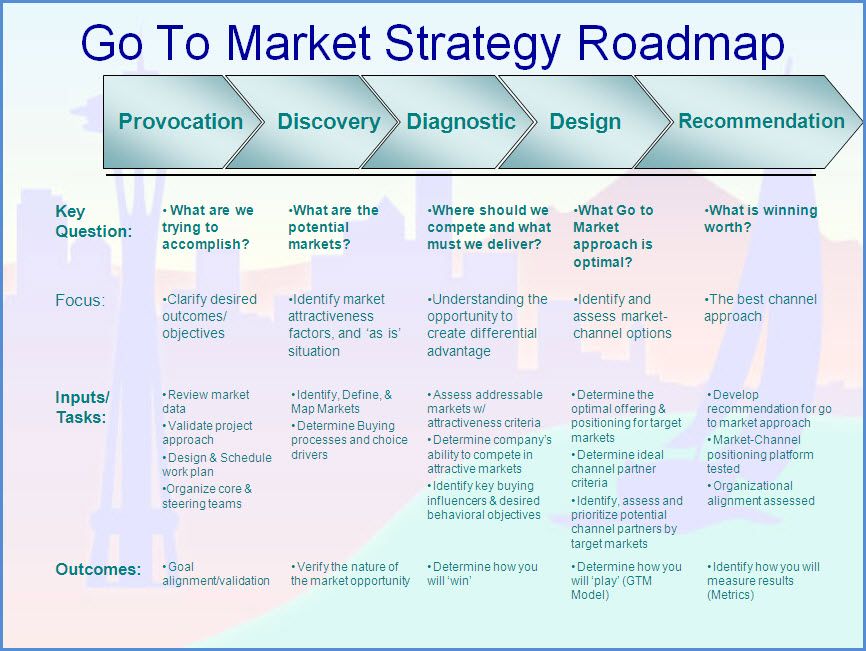 Once the to-do list is ready, divide it into three categories:
Once the to-do list is ready, divide it into three categories:
- Must do. These tasks are extremely important to achieve the goal. They must be completed in the first place, sparing no resources and time. If you take the example of a trip to America, buying tickets and booking a hotel would fall into this category.
- Worth doing. This includes everything that is important, but not critical. If you ignore such tasks, the result will slightly decrease. For example, if you do not make a list of attractions in advance, you can forget about some of them during the trip.
- Would be nice to do. These are optional tasks that do not affect the outcome of the case in any way. For example, small questions from the category of “what kind of cap to take with you to the USA, and which one to leave at home.”
A list of tasks by category will help you free up time and manage it wisely. And it is suitable for any area of life: it does not matter if you work full time, watch the children or combine both.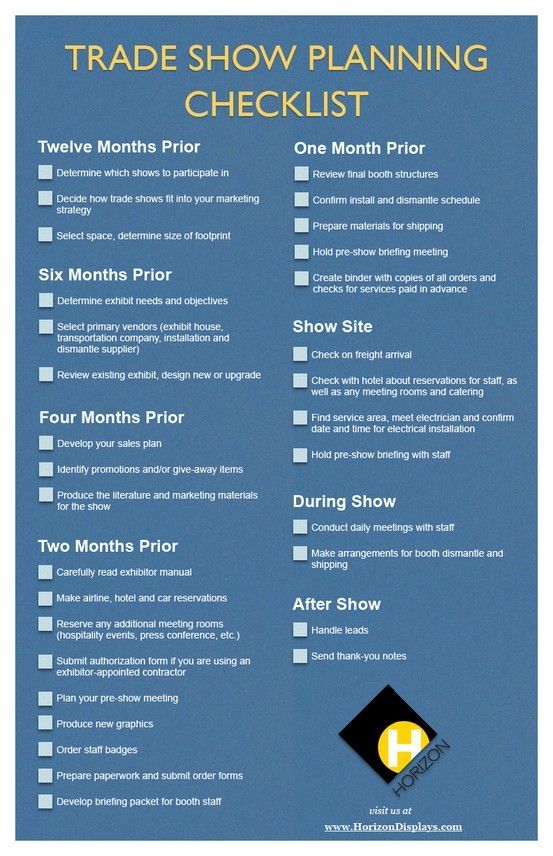
4. Put the tasks in order
The next step is to count the number of tasks and arrange them in order. This is especially useful when you have multiple cases in the same category at once.
Reassess the importance of the tasks within each group. That way, you'll know what to tackle first. Do not forget about one of the main principles of prioritization - the point is not in the number of tasks completed, but in the quality of execution.
5. Create a master list
You can't properly prioritize tasks if you keep them in your head. This is what the master list is for - a summary list of all cases. Write them down in notes on your phone or in a document on your computer, categorize them, and put them in order. So you can easily add items and make changes if necessary.
6. Use different productivity methods
If the master list doesn't help you figure out what to put off and what to do right now, try other productivity methods. For example, use the Pareto principle, according to which 20% of effort gives 80% of the result.